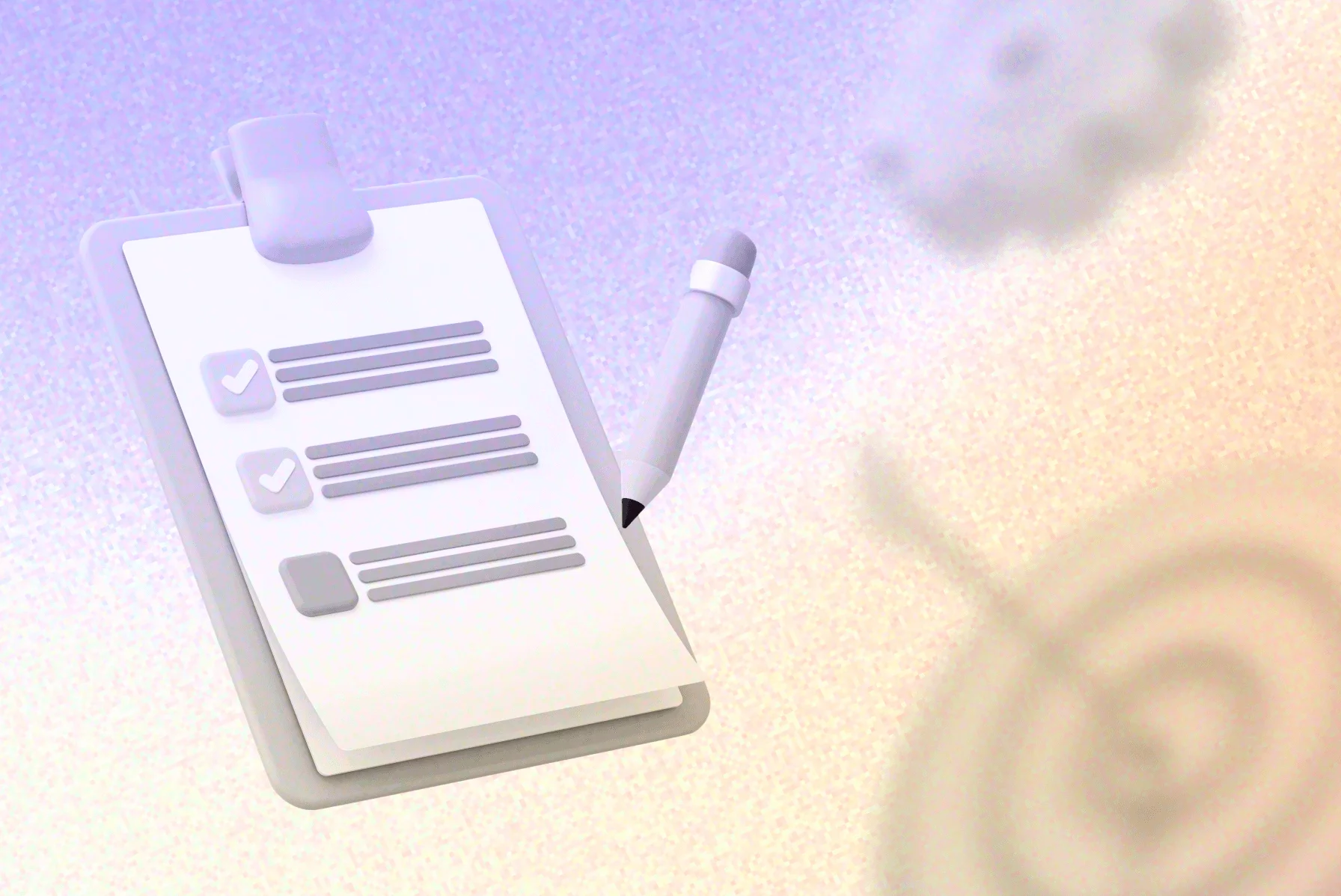If you’re a fan of creative chaos, this article’s not for you. But if, like me, you’ve had it with missed deadlines, and disorganized workflows, then keep on reading.
First, a quick intro: Miruna here, CMO @ Planable. And a marketer who’s launched many campaigns throughout her career.
In this article, I’ll peel back the layers on campaign management: from campaign planning to task management, content creation, and distribution on multiple marketing channels.
I’ll also share my tried and tested analytics solutions, approval software, and campaign management software tools.They keep me sane, bring clarity to my marketing team, and enable content that delights our audience.
Contents
What is campaign management software?
Campaign management software is a category of digital tools that help marketers and executives plan and manage the implementation of marketing campaigns. The best marketing campaign software includes features that support team collaboration, creative asset organization, content publishing, reporting, and the overall management of marketing efforts.
Why you should use a marketing campaign management software
You’re surely accustomed to project management platforms. Think of the marketing campaign management software as the must-have evolution from the more generic tools towards a place that fully supports your marketing efforts. Let me get more specific:
1. Align your team and stakeholders & save time
Dedicated campaign management software enables you to easily show the roadmap to everyone involved. Blog articles, social media posts, email marketing campaigns, press releases, ads, you name it.
All pieces of content and activities within your marketing campaigns come together and ensure alignment on who writes the copy, who approves the final asset, and when each piece goes live.
Goodbye surprise deadlines, countless approval reminders, and subpar content. Hello, clarity, efficiency, and outstanding campaign performance.
2. Gain control, and lose the stress of launch day
Launching a marketing campaign is stressful. Always. I literally can’t remember one campaign that I launched stress-free while sipping on a Frappuccino. What makes campaign launches stressful are the fixed deadlines and the overwhelming amount of moving pieces. Articles, links, visuals, CTAs, UTMs, vendors, social media posts, newsletters, press releases.
Do I have everything I need?
Don’t forget to update the link!
The visual has a typo.
Do we have all the right analytics in place?
Is everyone ready to launch?
How’s it going? Not enough visibility!
What can I do now to make this go viral?
☝️ Says my brain during every other second of a launch day.
I know everyone can relate and I swear I’m going somewhere with this.
Organization relieves stress. The better organized, the less stressed.
Checklists work, but proper marketing campaign management software does miracles. I won’t lie and say that since we’ve been using the proper tools and processes I am drinking Frappuccinos. Mostly because I’m not a big fan. I’m also still anxious about the results.
But I no longer feel like I don’t have control and that I’m juggling in my brain with an infinite to-do list. Whenever I get stressed out, I take a look at the campaign calendar, where I see the team working in real-time. And I get an instant status update, with a clear overview.
3. Get the most out of each channel & improve efficiency
Having your entire marketing campaign clearly outlined in a beautiful interface gives you creativity.
It’s one thing to list all your marketing campaign distribution channels. It’s a whole different feeling when you see and manage all your assets in one calendar.
The fact that there’s only two scheduled social media posts and 3 stories pops out. You instantly realize when one channel is underused for a campaign. You want a full campaign calendar with assets that complete each other. You want to see them working together on spreading the word about this awesome campaign you built.
And the right marketing campaign software does just that.
4. Keep consistency in messaging, tone of voice, benefits, and CTAs
When all your campaign assets and team members are in one place working together, consistency happens naturally. Everyone gets inspired by other pieces created. Writers naturally align, and designers get the actual feel of the campaign.
I found that when we start by creating the biggest piece of content of the campaign, creativity flows much smoother. It can be the announcement post, the press release, the newsletter. A long-form piece of content that serves as inspiration for all the supporting assets. When marketers don’t start with a blank page, it all comes together nice and easy.
5. Ensure clarity and gain flexibility
The right marketing campaign management tool gives clarity across team members and functions. By using the right marketing software, teams are able to see all the content depending on stages, to give feedback and approvals in real-time.
Granting granular access to all the stakeholders relieves project owners of so much back and forth. No more “how’s the blog post going?”, “what’s the status here?”, “do we have visuals for the newsletter?” and a bazillion other questions. It’s all in one place so everyone finds what they need easily.
Such marketing campaign tools also allow project owners to control each piece of content. Move it around the calendar, duplicate it, add visuals, and see it all within context. Decided to move the launch by a day? Drag & drop the content.
6. Get better results & exceed your business goals
All of the above-mentioned benefits essentially lead to this. Getting much better results.
With alignment, control, multichannel, consistency, and flexibility, the chances of success increase greatly.
Having it all in one tool influences so many factors along the process. As a marketing manager who’s experienced the transformation, I vouch for the increase in results.
How I manage our marketing campaigns
I’ve mentioned before, and I’ll say it again: it’s always stressful. Campaign management is usually a roller coaster of emotions for me. From stress to anxiousness to excitement to disappointment to excitement again to curiosity to calmness and wisdom.
That being said, introducing the tech stack to support our marketing campaign management has been transformational. To our emotions and our results. I’ll use this space to take you through our journey with campaign management. What we did before and how we transformed our processes and tools to get us to today’s successful launches.
Marketing campaign management without the software
Won’t bore you with the long history, I’ll just share some context on how we used to do it.
We had a campaign idea.
We decided when and how we’d do it.
We set a timeline (with little to no information).
We spent a lot of time on one main campaign asset and on the creative idea.
We’d then announce we’re almost ready to launch.
Do a quick recap of our channels.
Ask marketers to create content for the channels they manage.
Launch.
Panic about a million things that weren’t actually ready.
Measure & be disappointed about the results.
Although we knew the theory, we were focusing too much on the idea or content of the campaign, and too little on managing the campaign distribution.
After a (shameful) amount of such campaigns, we decided to change. And here’s how it looks now.
Managing marketing campaigns with all the right tools
The first thing that I realized the team was missing was context. What is this campaign about? Why are we doing it? What is our goal? And what are we communicating?
So now, the first step before starting any kind of marketing campaign is to create a Notion doc with all the general information the team needs. It looks something like this:
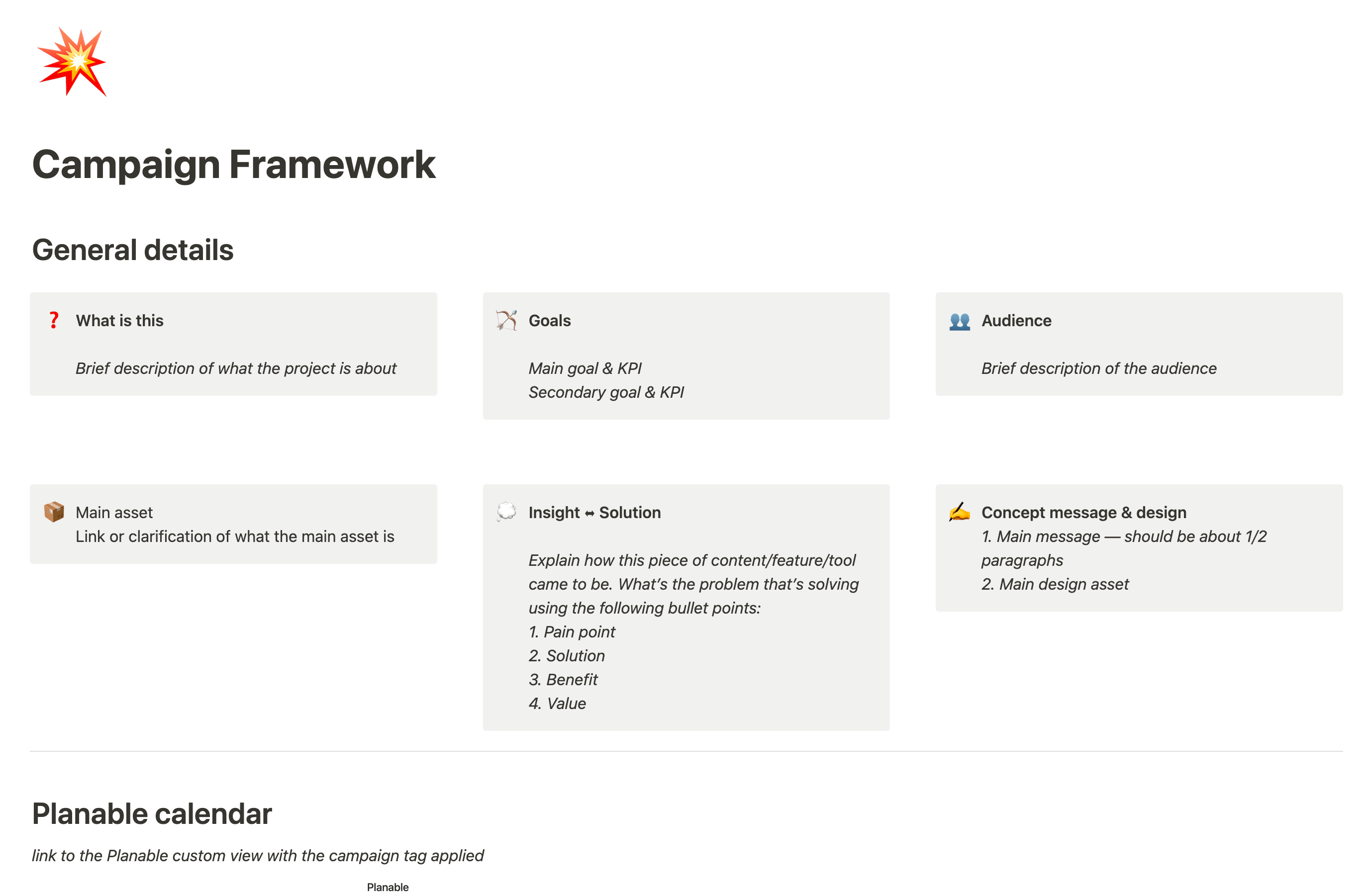
Campaign brief template in Notion created by Planable team
The second issue was that we didn’t have one central place to build our campaign timeline with each individual content piece included. Luckily, Planable introduced Universal Content. Now, our second step is creating placeholders for everything that will be included in the campaign:
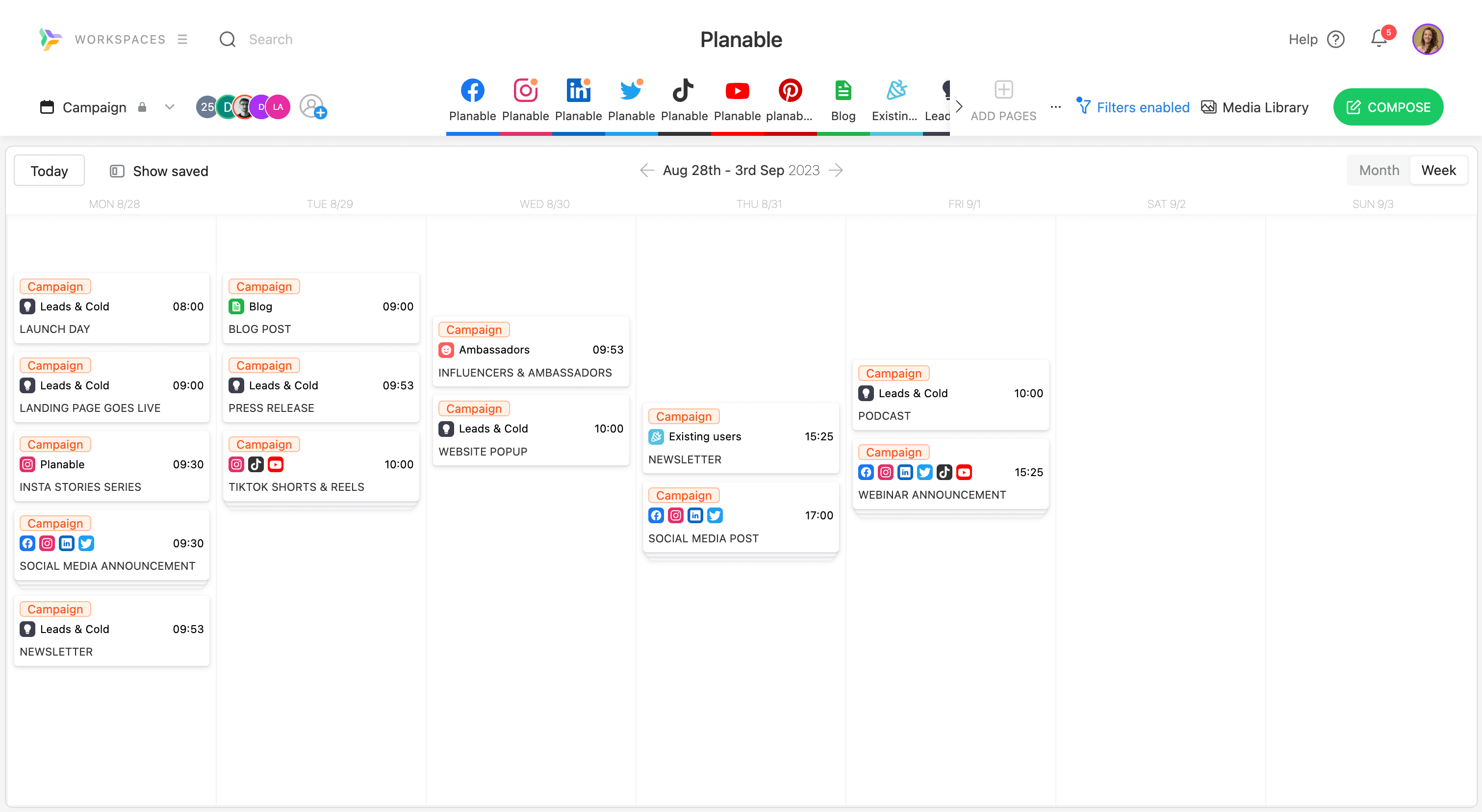
Marketing campaign management calendar template in Planable
The third step is to assign each of these content pieces to the team members that will contribute to their creation. Writers, email marketers, designers.
They create the content like this:
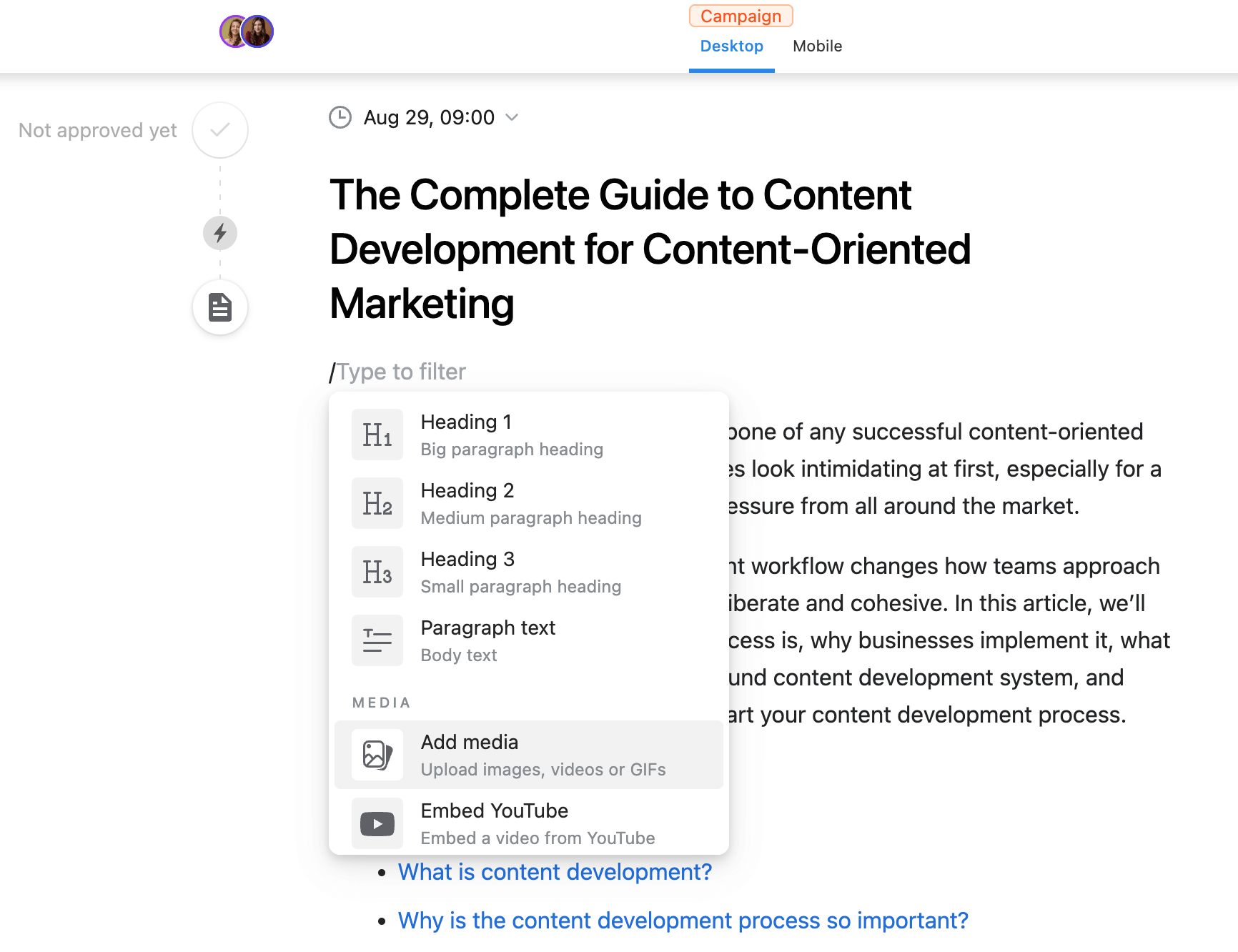
Long form content post in Planable
We then leave feedback like this:
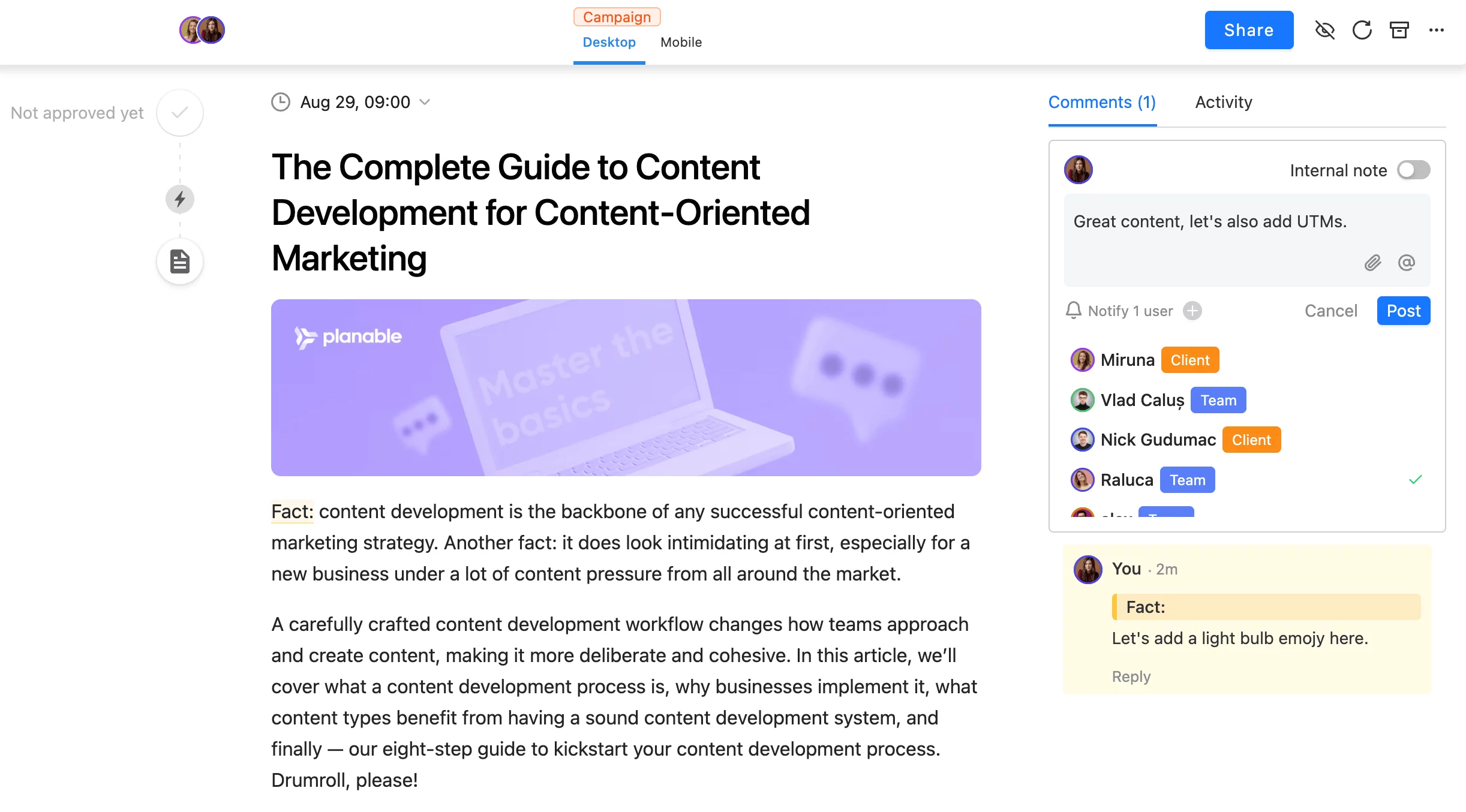
Content marketer leaving comments for the team on a blog post
They then request approval like this:
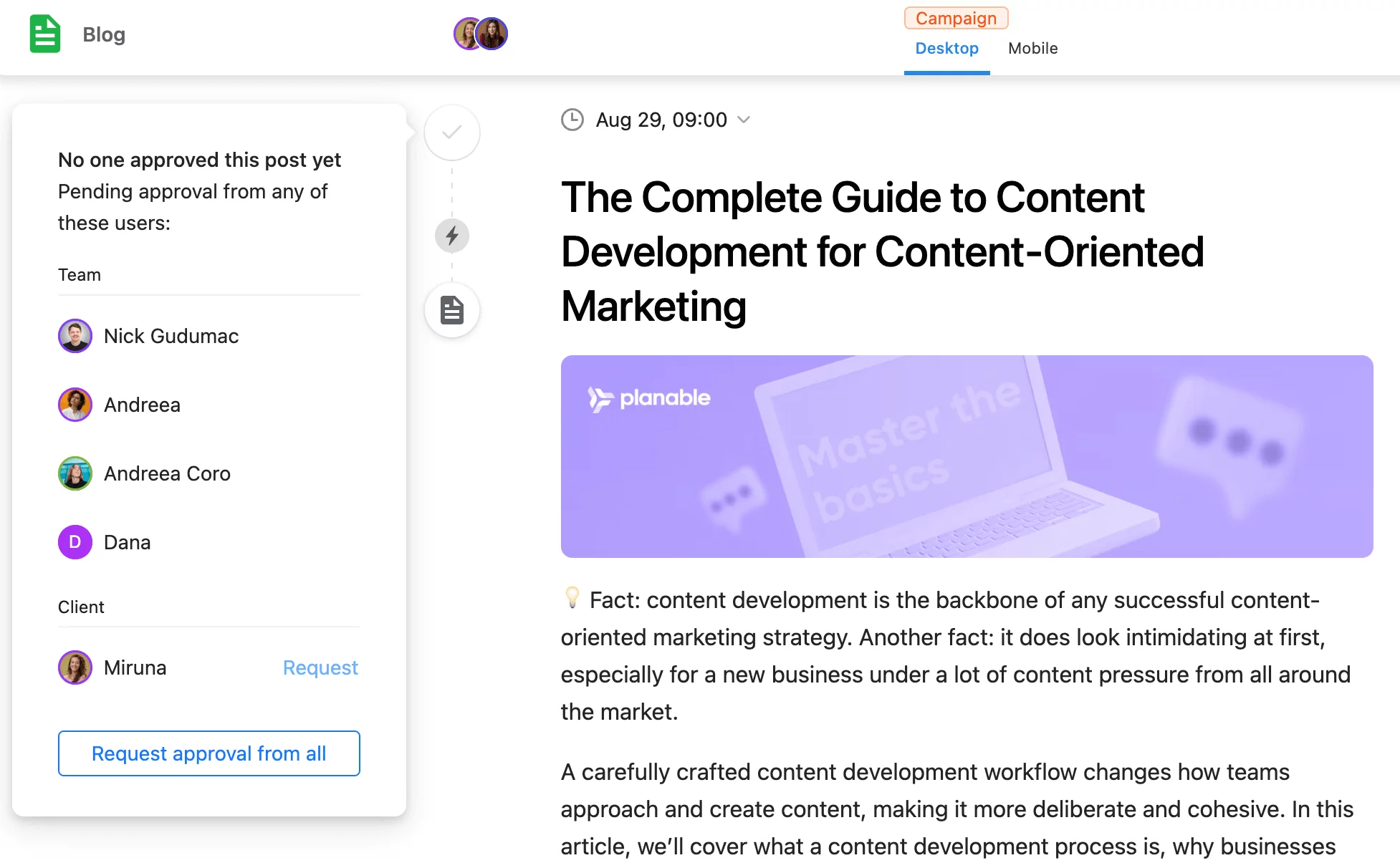
Requesting approval from marketing team in Planable
And I approve just like this:
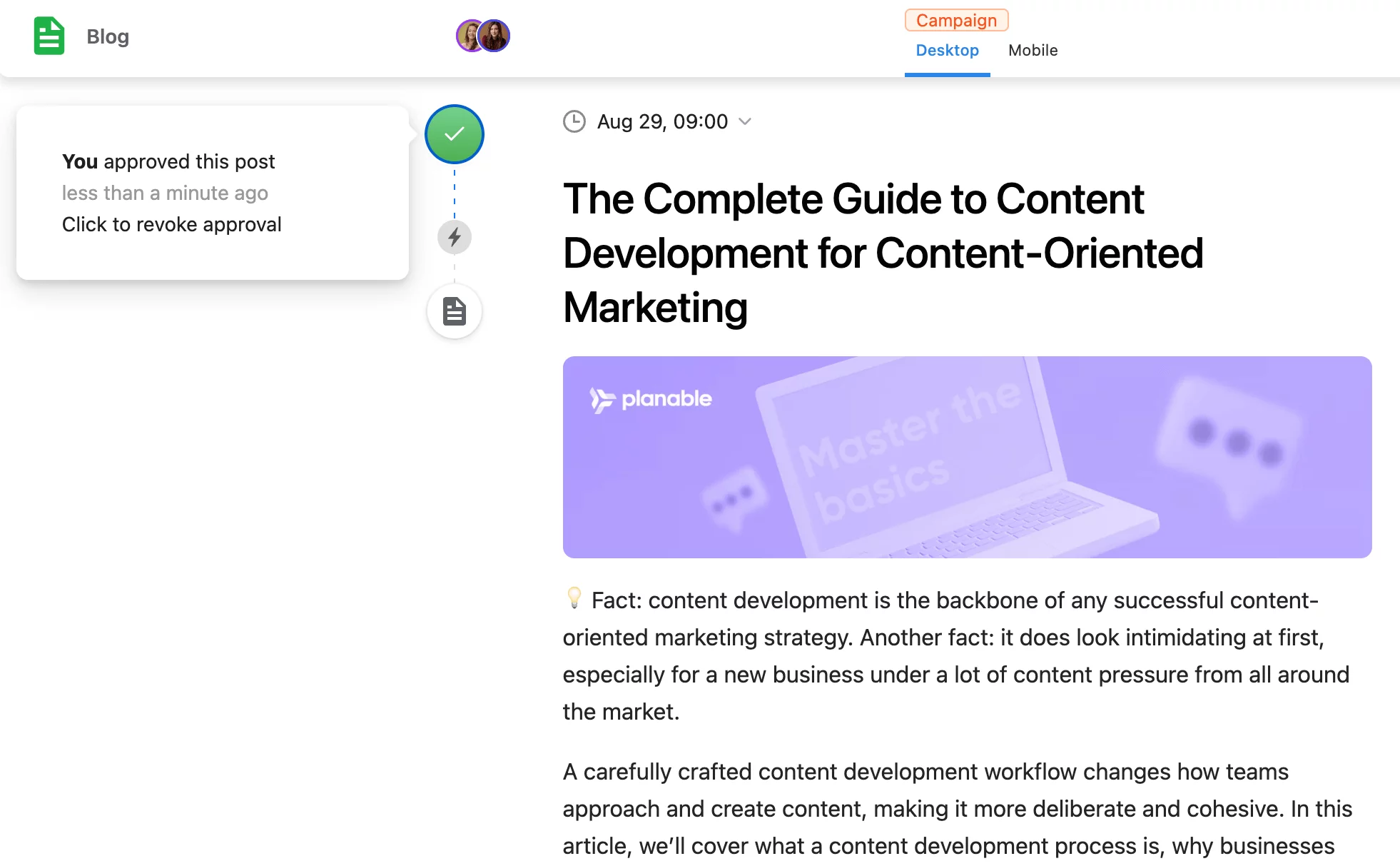
Approved blog post status
It then all goes out automatically on social. On other channels, we mark them as published once done:
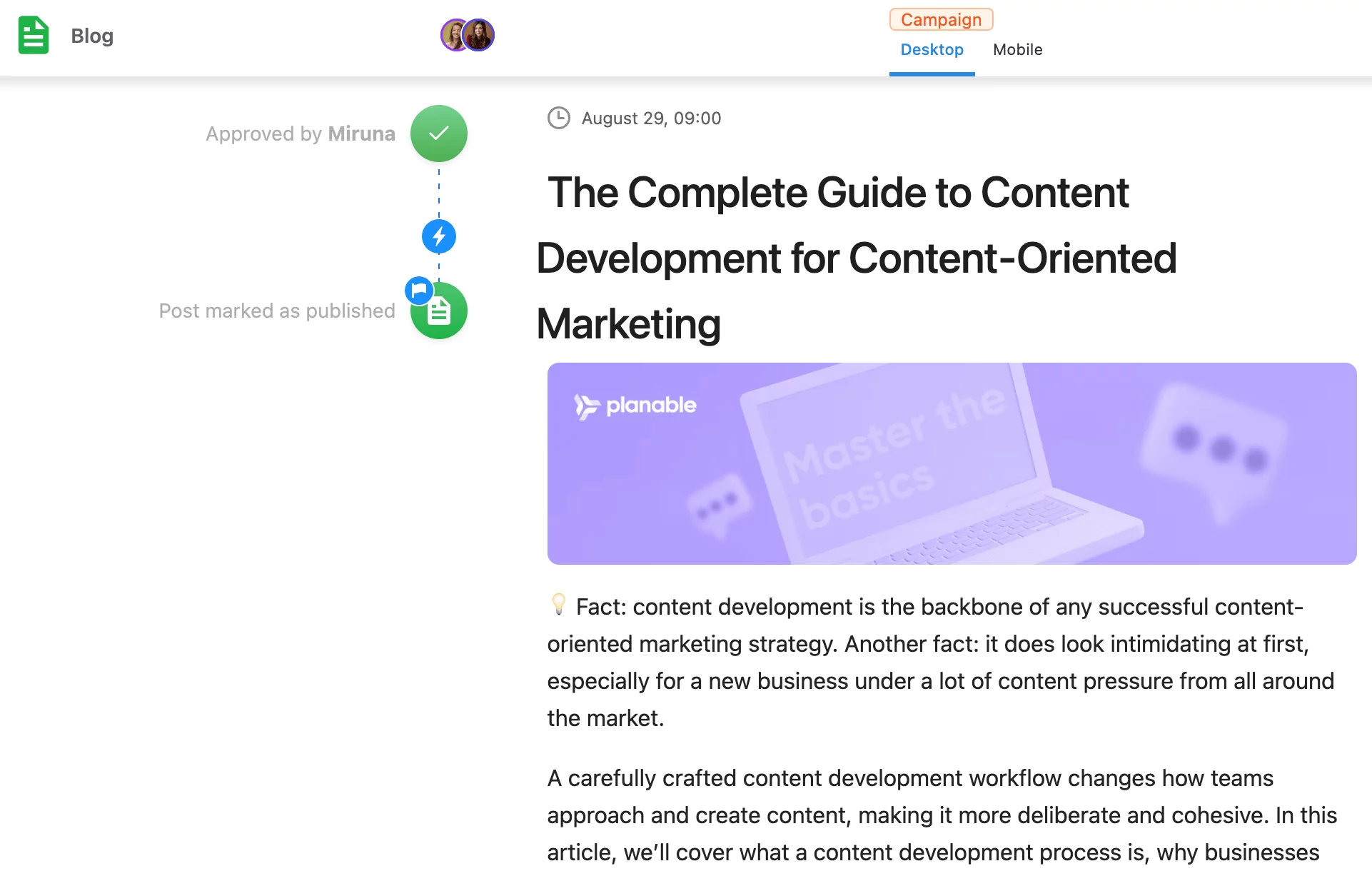
Published status on posts in Planable
TA-DAA!
What to look for in a campaign management tool
General management software just doesn’t do the trick. You need to give your marketing campaign management the home that really fits the bill. Here are the must-haves I discovered:
Supported formats & flexibility
Your strategy dictates the different types of content you’ll produce, catering to the multiple channels you’ll target. No two teams are the same, as no two marketing campaigns are the same.
You need a tool that supports different types of content and enables you to implement various marketing workflows to best fit your internal processes.
Collaboration features & ease of use
The best campaign management tools will make coordinating a team of 20 as smooth as sailing in calm waters.
When everyone gets easily up-to-date on the progress, gives clear feedback, and gets automatic nudges when it’s their time to act — time flies in your favor, and to-do lists turn green much faster.
High-fidelity content previews
When it comes to approving content before it goes out, you gotta have pixel-perfect previews to avoid any surprises.
Approving social media in excels, or youtube videos in emails? Forget about it — you NEED to see the text next to the image, the description underneath the video thumbnail. You want to see how your Instagram grid looks overall before you decide on the best visual for the announcement. Otherwise, you’re still half-guessing.
Approval workflows & personalization
When you’re the only one reviewing and approving content, things are pretty simple.
But what if you need a green light from legal and the CEO wants to approve the upcoming press release? A tool that allows you to set up multiple approval levels, with version control, will save you a lot of headaches.
And what if you’re leading multiple teams, working on multiple campaigns in parallel? Different workspaces, with different access permissions and view filters, are an absolute must.
Calendar view
And speaking of views — being able to put the work on a real timeline is a huge help. You can’t publish the press release before the presentation video is live on YouTube. Put deadlines on a content calendar and rest assured that all dependencies are clear and no one in the team misses the mark.
If your communication focuses on social media as well (and whose doesn’t these days…) then content view options such as feed or grid are also extremely useful.
Integrations
Take advantage of marketing automation to the maximum. Integrations with social media platforms for direct scheduling and publishing will make your social media marketing efforts a breeze. Automatic email notifications for feedback mentions or approval requests will make for an invaluable marketing project management tool.
Take time with your team to think of how you could automate repetitive tasks. Ad campaigns, customer engagement, contact management — I guarantee you’ll find an automation tool to help in each of these activities. The more these tools can further communicate with your main campaign management software through direct integrations, the better.
My best marketing campaign management tools
I already gave two spoilers, Notion and Planable, but things are way more complex. Over the years, we’ve been faithful to some tools while we experimented and changed a lot of others to get to our current favorite list of stellar campaign management software tools.
So here are my top recommendations for each step of your marketing campaigns:
Planning and collaboration
1. Planable – best for content management and collaboration
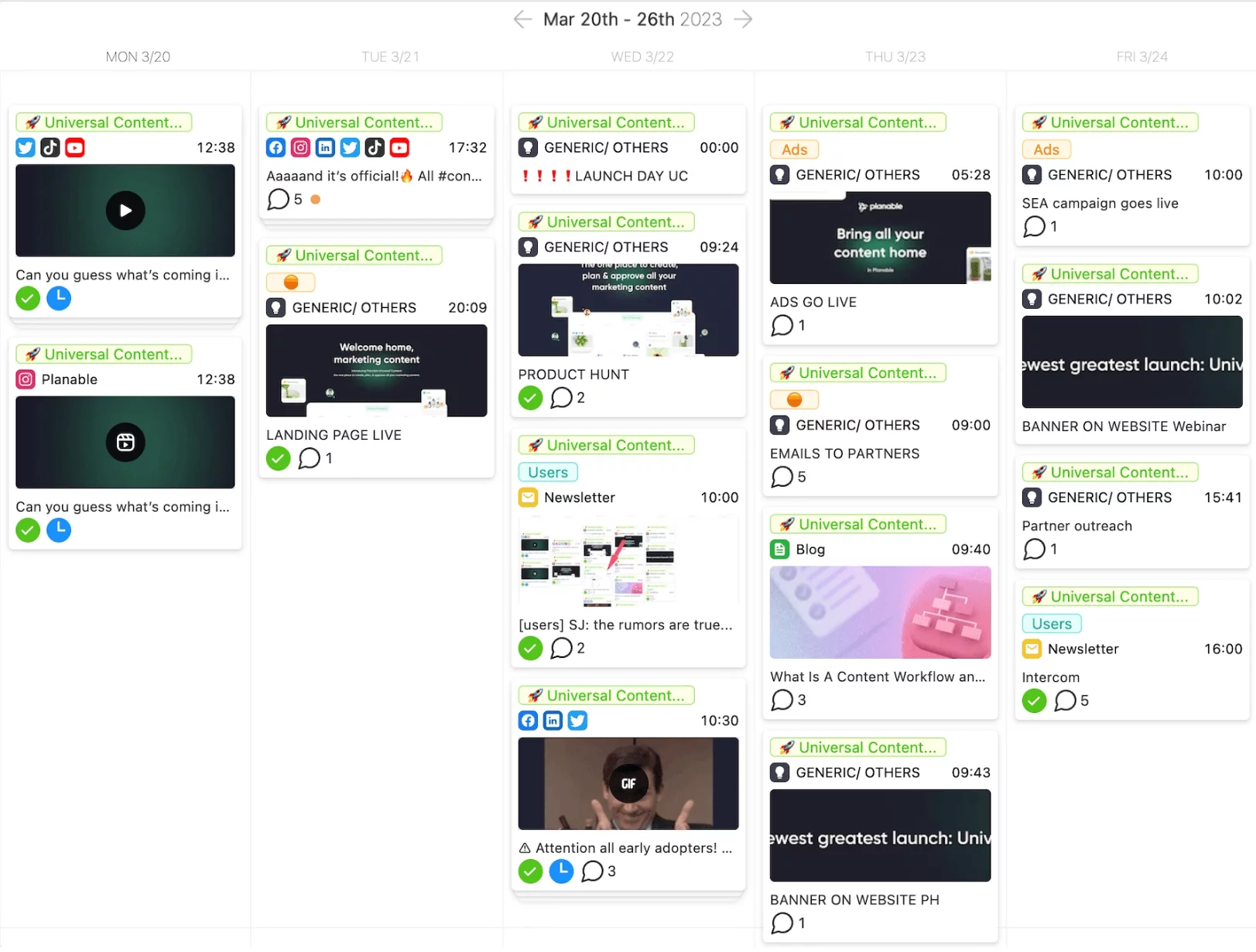
Product launch campaign management in Planable
Planable is a marketing operations software with collaboration and approval features that enables you to create, plan, review, and approve all your marketing campaigns’ content — social media, blogs, newsletters, press releases, you name it.
The intuitive drag-and-drop calendar allows you to plan all your content pieces with no sweat. Then, you can assign each piece of content to your team and keep a constant birds-eye view of the work being done.
Once a post is ready, you can easily give feedback through comments and approve the piece for publication. Social media posts can also be published automatically, as Planable has integrations with all 8 major social media marketing platforms (Facebook, Instagram, LinkedIn, Twitter, YouTube, Google Business Profile, TikTok, and Pinterest).
You can try all of Planable’s features with the Free plan, which includes 50 posts. Then, you can upgrade to the paid plans starting at 11$ per month (paid annually).
In my totally unbiased opinion, Planable is the best campaign management software for marketing teams that value team collaboration and custom approval workflows.
2. Notion – best for team wikis

Marketing campaigns overview in Notion
Notion is a generalist tool that can work perfectly for your marketing campaigns with a bit of tweaking. We use it to work on our campaign briefs, keep an overview of our OKRs, and keep the team’s wiki.
Notion comes with a generous free version, and the pricing plans start at $8/user/month (billed annually). It’s a great campaign management tool if you take the time to iterate a bit on the formatting and adjust it to your needs.
3. Airtable – best for data management
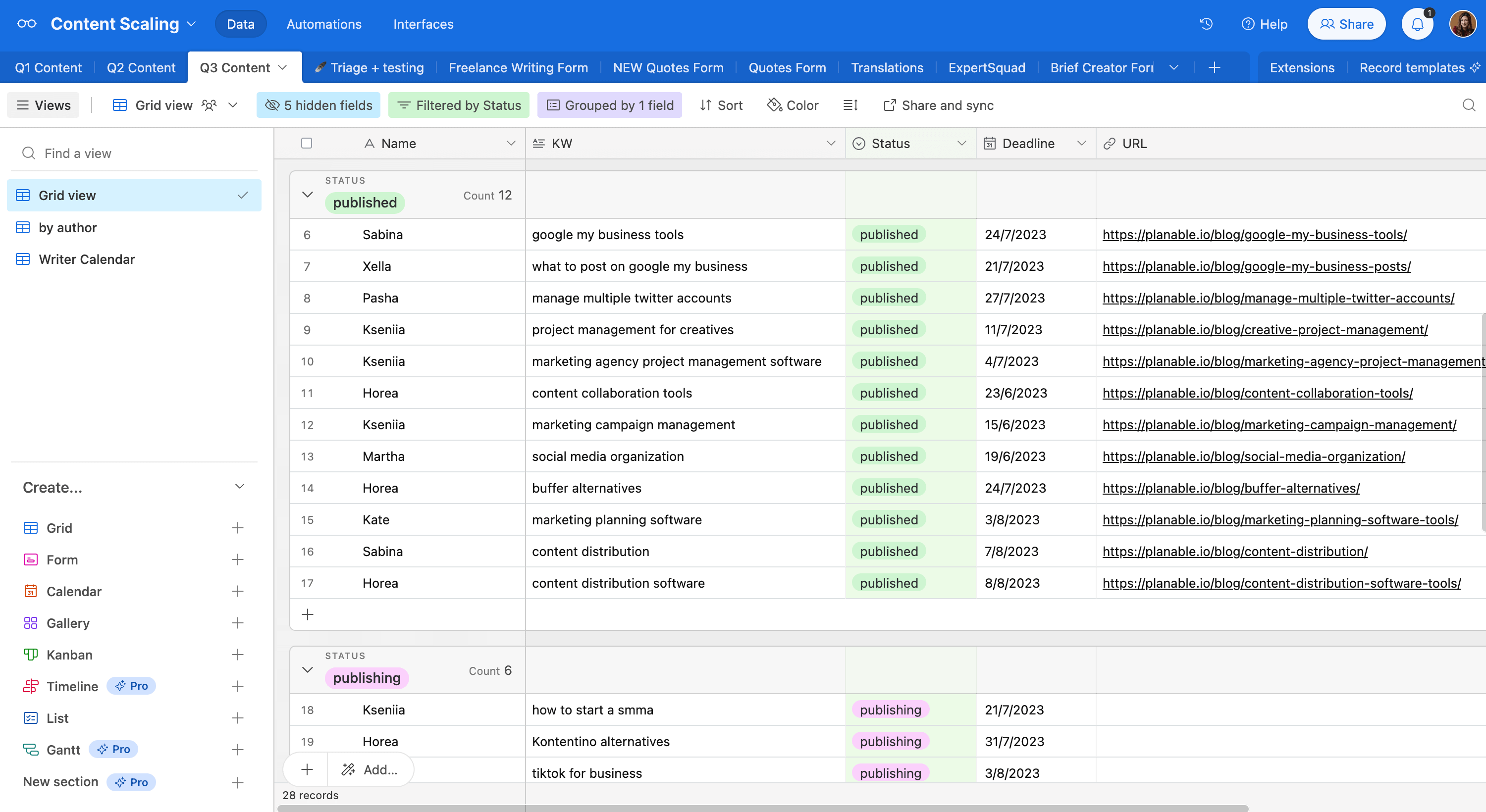
SEO content planning in Airtable
At its core, Airtable is a low-code platform that allows you to build apps, work with data, and build AI-enabled workflows. We love its capability to collect information through simple public forms, generate multiple views, and work through detailed analytics data. The SEO team uses it intensely to manage content pieces, external collaborators, or keyword information.
Airtable has a free plan suitable for individuals and small teams that are just getting started, and its pricing plans start at $20 per seat, paid annually. It’s a great campaign management system when you’re dealing with a lot of marketing data.
4. Linear – best for project management

Marketing team task management in Linear
Linear is my team’s go-to project management software. It’s very powerful for general teams (in fact our Engineering team uses Linear as well), and we found it fits marketing teams’ needs perfectly as well. You can split work into teams, projects, and cycles. It also supports custom task statuses and templates, very useful when you hand over tasks with specific information attached.
Linear offers a free plan for 250 issues and its paid plans, with unlimited issues and advanced features, start at $8/user/month. It’s a great campaign management tool when you focus on team-level project management as well.
Content creation
1. Planable – best for collaborative content creation
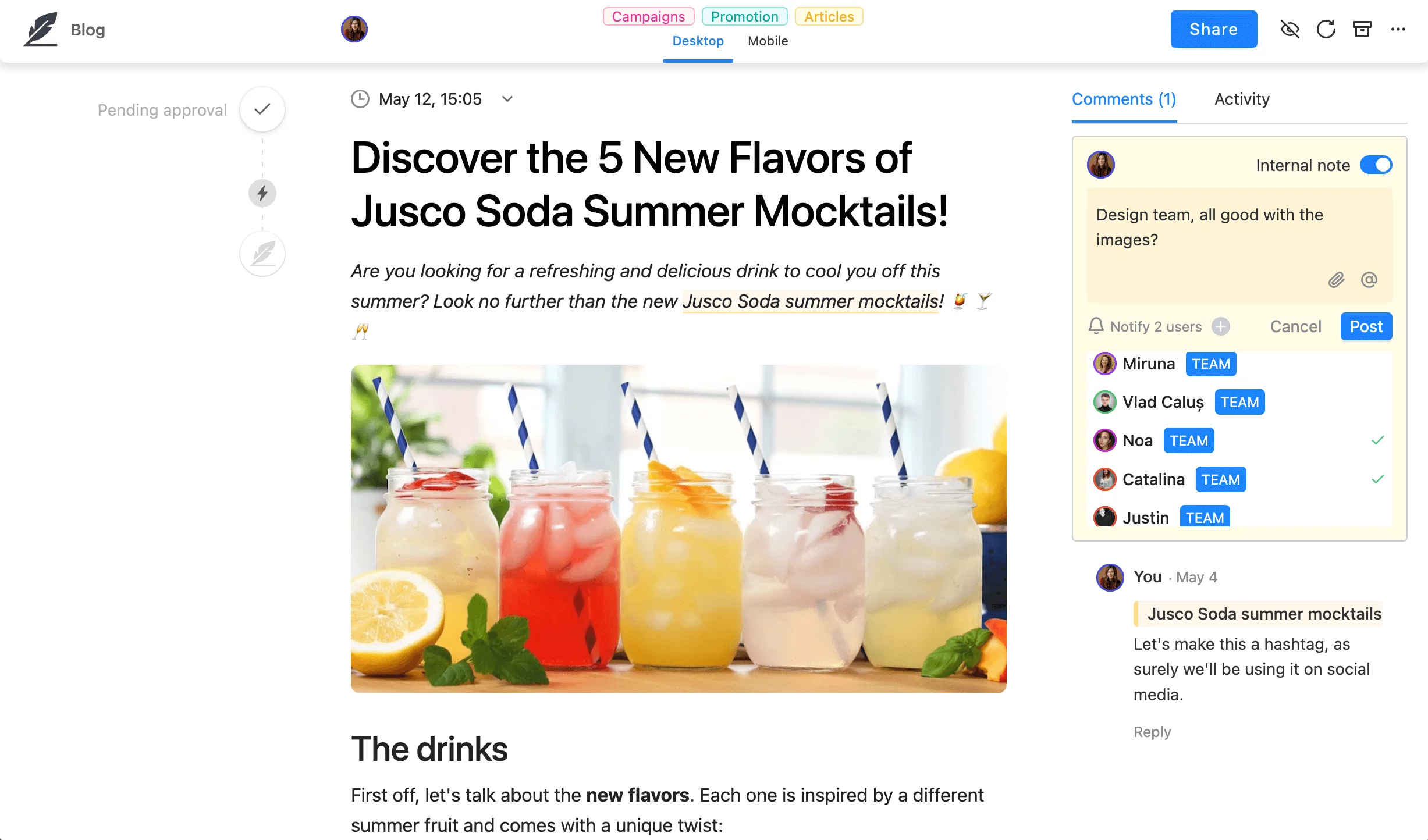
Collaborative content creation in Planable
Planable is a must-have campaign management solution for content creation. Marketing teams that run integrated campaigns — with general content pieces as well as social media management, will find Planable especially useful. Its post creator offers rich-text editing, as well as easy media embeds for blog posts, newsletters, press releases, or general articles.
The social media content benefits from pixel-perfect platform-specific previews, custom views such as feed or grid, as well as direct publishing and scheduling through the tool’s integrations with the 8 major platforms (Facebook, Instagram, LinkedIn, Twitter, Youtube, Google Business Profile, TikTok, and Pinterest). The post editor also includes an integrated AI generator, that can help create content from scratch, improve existing content or come up with hashtag ideas.
In Planable it’s super easy to exchange feedback in context, with the option to keep conversation private in the team, before showing the final content to the client. Custom approval workflows and content versioning also support straightforward teamwork, without the hassle of ever redoing what was done or losing track of the “final” version.
Planable comes with a free plan, packed with all the features, for 50 posts. Its paid plans start at $11/month, billed annually. It’s the best of all marketing campaign management tools when it comes to writing content and refining it with your team.
2. Figma – best for visual assets

Collaboration over campaign landing pages in Figma
Figma is a collaborative design tool that’s great for marketing teams working on campaign visuals. It’s a designer’s best friend, with powerful creative features and assets, while also being easy enough for the other members of the marketing team to get involved in the process. You can easily give feedback through annotation comments, export assets, or create simple visuals relying on the intuitive drag-and-drop interface. You can use it as project management tool for creatives.
Figma offers a free forever Starter pack, with paid plans starting from $12/editor/month, billed annually. It’s one of the best marketing tools for teams collaborating on creative assets.
3. SurferSEO – best for SEO-optimized articles
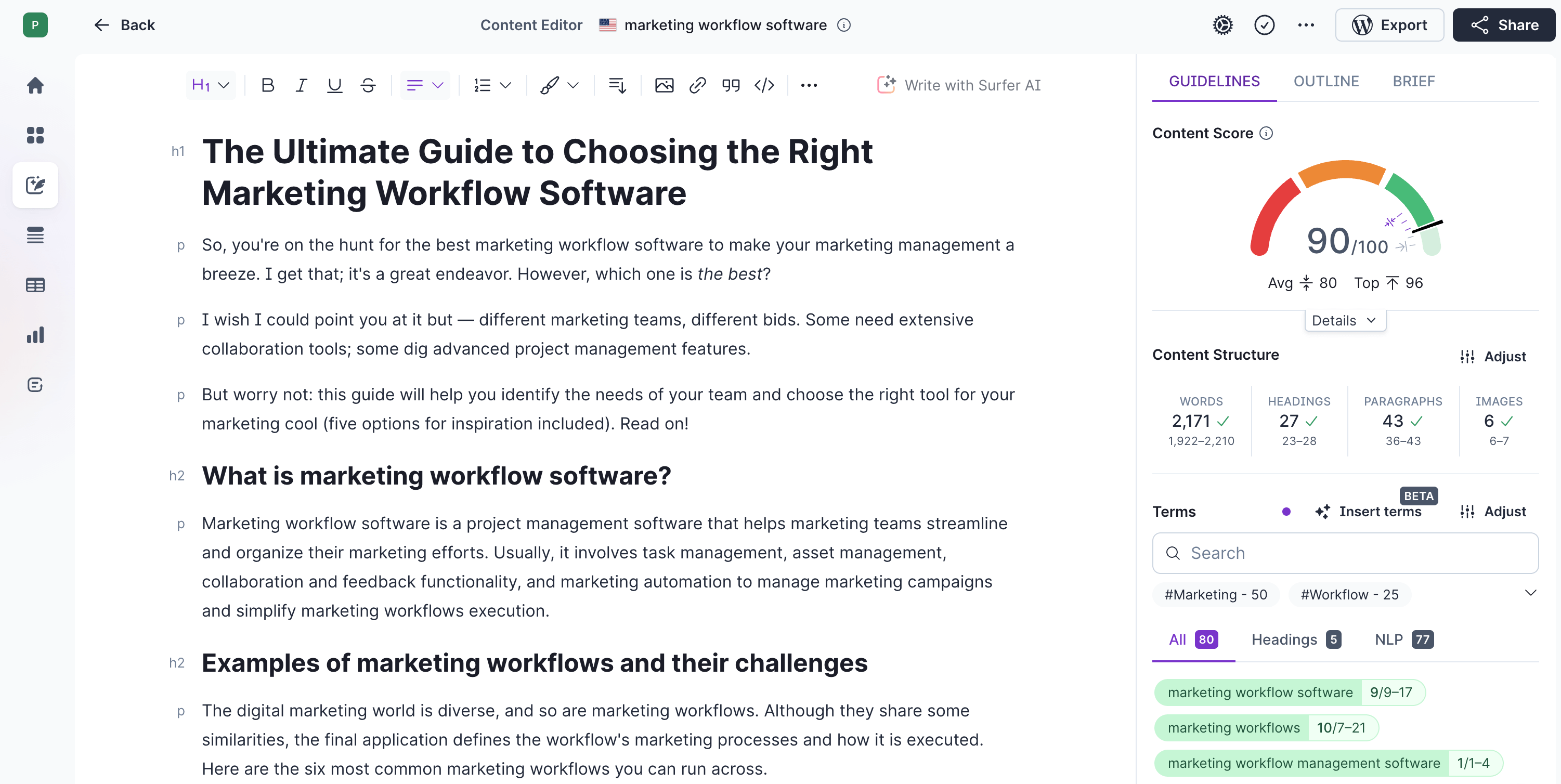
SEO blogpost editing in SurferSEO
SurferSEO is one of the best-known marketing tools for SEO-focused teams. It comes packed with features like keyword research, support for creating article briefs, and creation features that make it easy for writers to hit the SEO requirements. It’s also great for working with external writers, as it allows you to give editing rights for a particular piece of content to people who don’t have an internal account. The automated export to WordPress is also a great add-on, saving you from some repetitive tasks.
SurferSEO plans start at $69 per month, billed annually, for 2 organization seats and 180 content editor credits per year — which basically means 180 content pieces. You should absolutely include SurferSEO in your company’s campaign management tools stack if you’re focusing your efforts on SEO.
4. Grammarly – best for proofreading

Marketing content proofing in Grammarly
Grammarly is a powerful grammar writing assistant. You can install the dedicated desktop or mobile apps, and use it as an add-on in your favorite browser, so you’ll always have the grammar suggestions at hand. It’s great for punctuation, spelling, and even sentence rewrites when you’re looking for clarity or a specific tone of voice.
Grammarly comes with a free version with basic features and paid plans starting at $12 per month. It’s a must-have tool for marketing teams looking for crystal-clear, mistake-free content.
5. Cleanshot X – best for screenshots
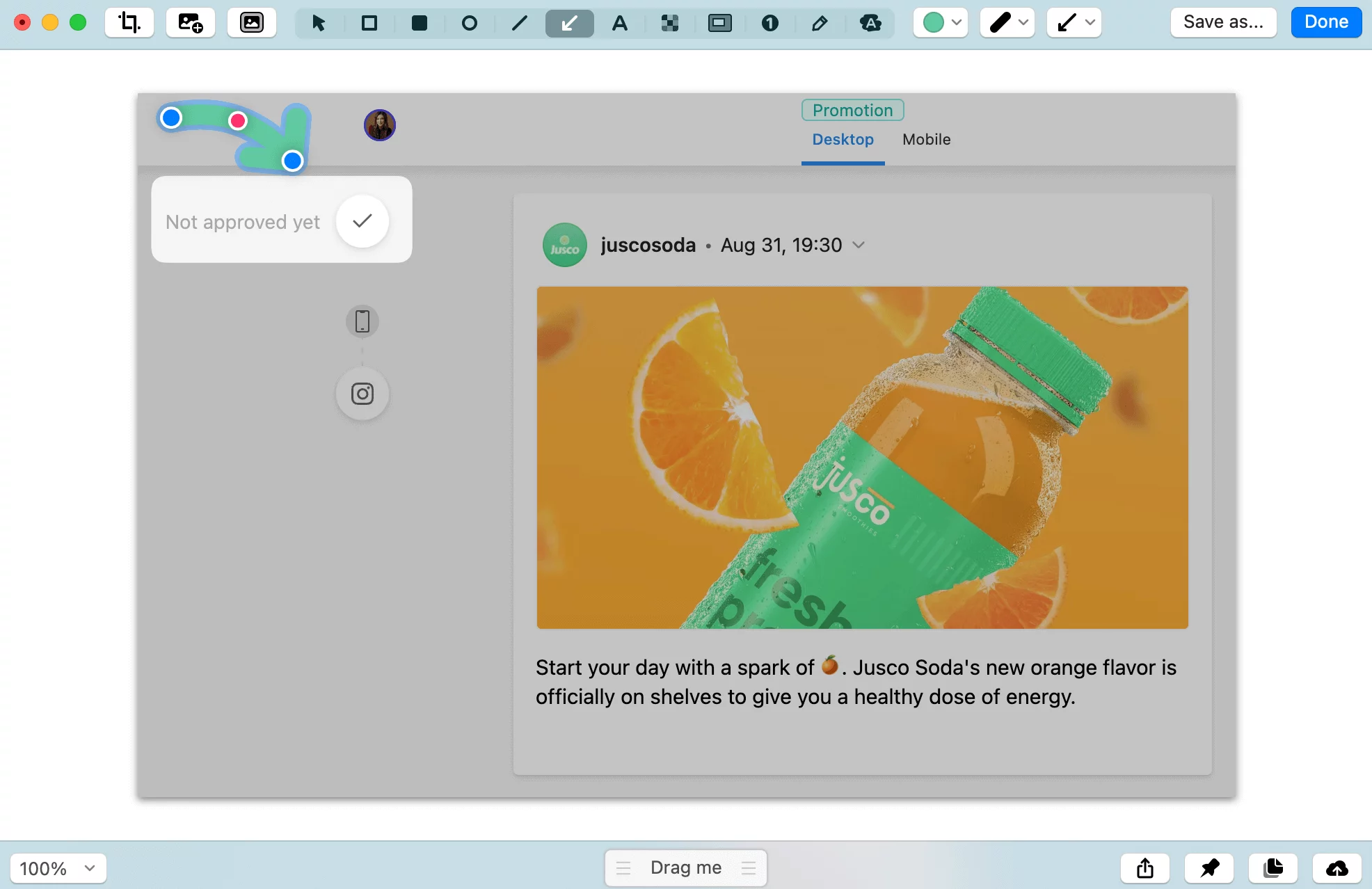
Marketing creative assets editing in CleanshotX
Cleanshot X is my go-to option for screenshots and screen recordings. It’s simple yet super powerful, so everyone in the marketing team masters it easily. Especially if you’re selling a digital product, you want to showcase your product in many of your digital marketing campaigns or within your customer relationship management efforts. So it’s very handy to easily cut images, add explanatory text, arrows, annotations… to blur areas, or even combine two or more images into one to show progress steps.
CleanShot X costs $29 as a one-time payment for the basic features, or $8/user/month billed annually for more advanced needs. It’s one of the best marketing tools I found for screen grabbing. However, keep in mind that it’s only available for Mac users.
6. Arcade – best for digital product demos
Still in the realm of showcasing digital products, Arcade is a wonderful tool when your marketing team has to showcase how-to’s in your product. Easily build step-by-step scenarios, that advance when the reader clicks each designated area. Arcade takes async product demos as close as you can get to the real thing. You can easily share direct links or embed the code in your website, like I’ve done above with our short Planable demo.
Arcade has a free option for 1 user and 3 published arcades, while its paid plans start at $32 per month. It’s one of the best campaign management tools you can wish for to take your prospects through simple product demos.
Distribution
1. Planable – best for collaborative social media distribution
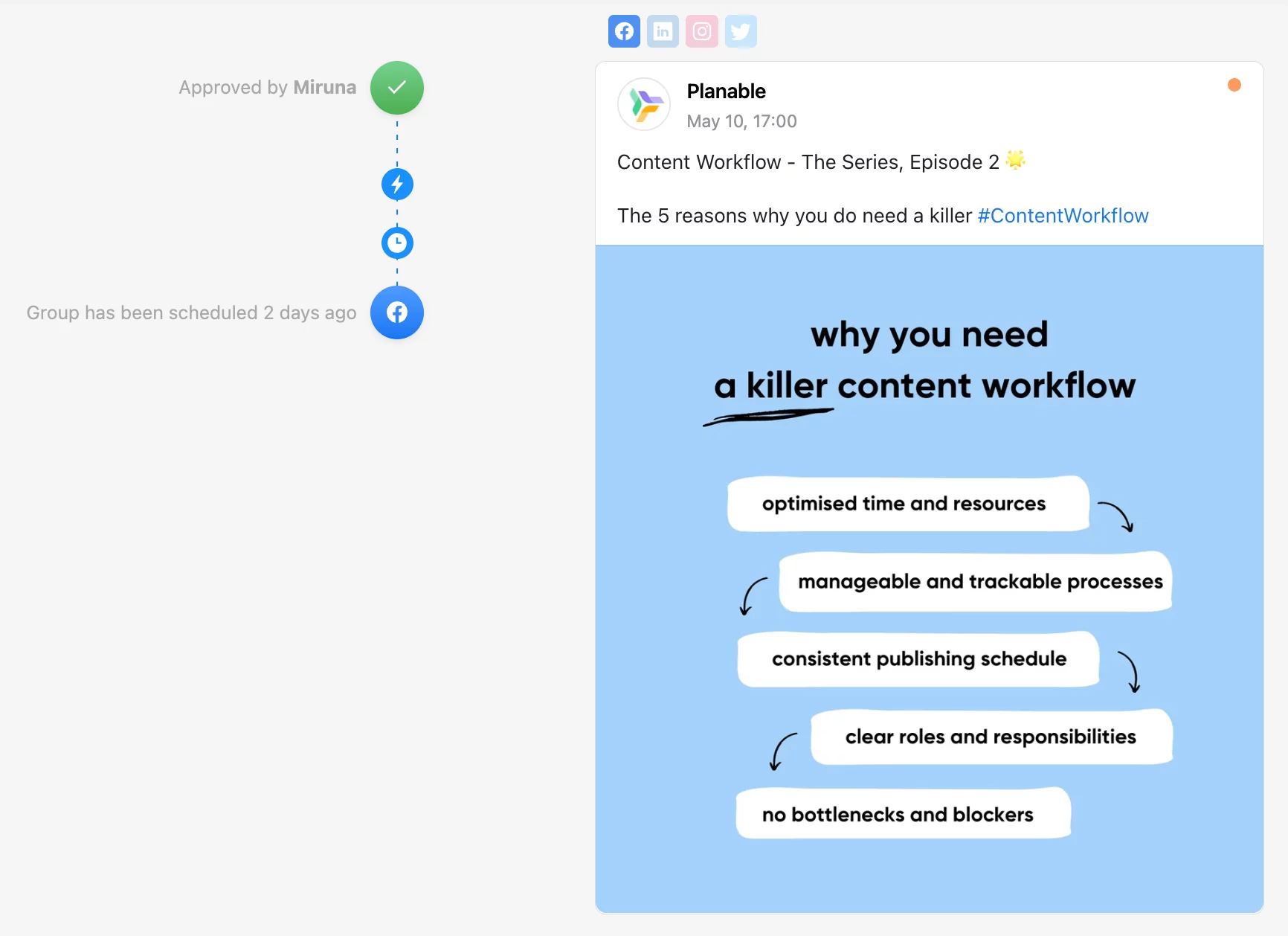
Approved and scheduled post over multiple channels in Planable
Planable is the best campaign management software for teams valuing collaboration, approvals, and social media direct integrations. It’s a content marketer’s dream with the intuitive drag-and-drop content calendar, pixel-perfect post previews, and automatic scheduling for Facebook, Instagram, LinkedIn, Twitter, Youtube, Google Business Profile, TikTok, and Pinterest.
Planable offers 50 posts in its free plan, with unlimited features for you to test it to its full capability. The paid pricing plans start at $11/month, billed annually. To me, it clearly ranks #1 in the campaign management tools for teams looking for social media distribution and integrated marketing planning software for multiple marketing channels.
2. ConvertKit – best for email marketing campaigns
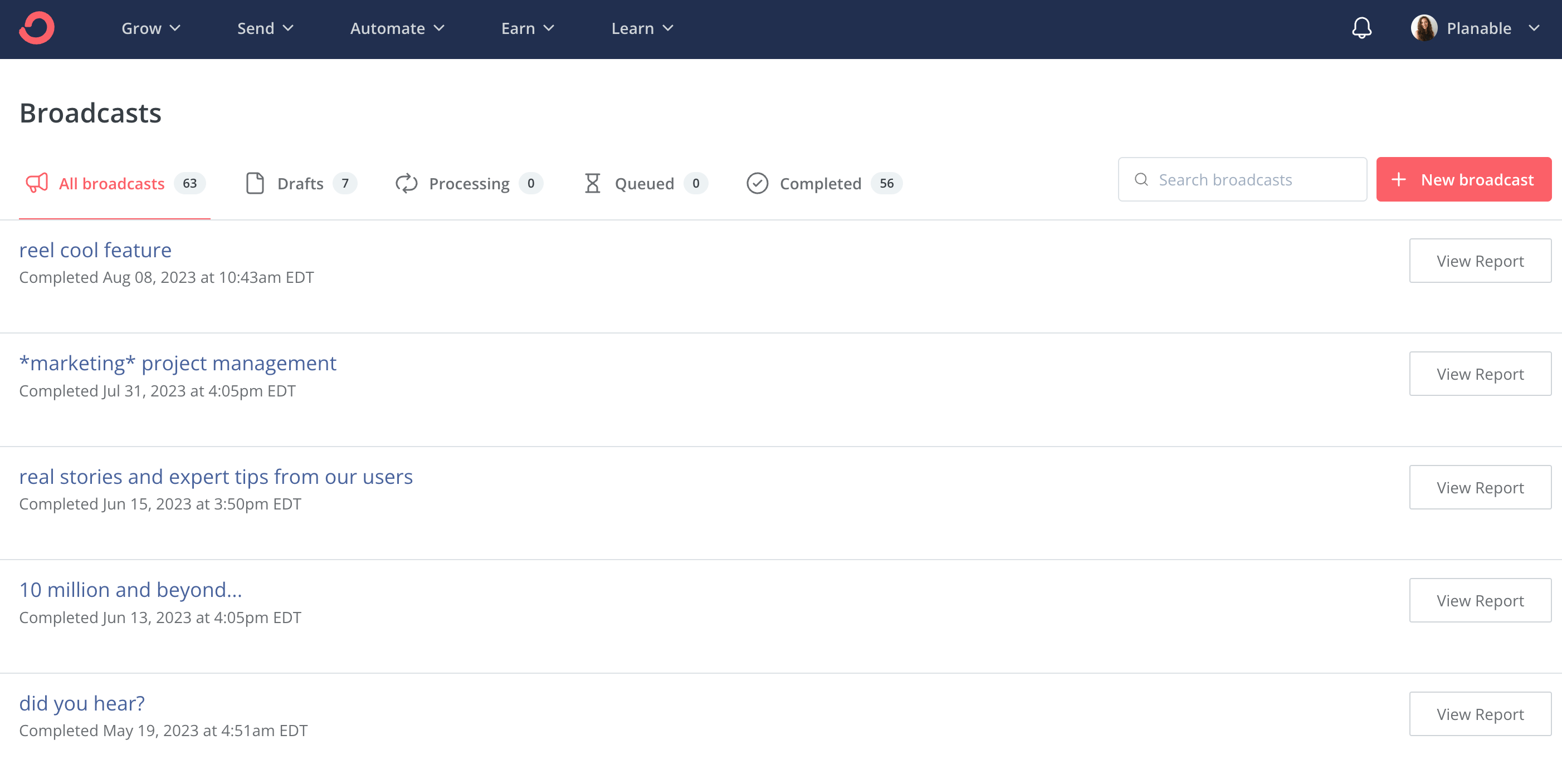
Email marketing automation in ConvertKit
When it comes to email marketing, my go-to marketing automation platform is ConvertKit. It allows you to easily manage your subscriber base, send email campaigns, or create specific email sequences for new leads.
ConvertKit offers a limited free plan for up to 1000 subscribers, while its paid pricing starts at $9 per month for up to 300 subscribers and continues to grow based on your number of subscribers. It’s one of the best email marketing campaign management tools for teams running digital products and subscriptions.
3. UTM.io – best for campaign attribution measurement
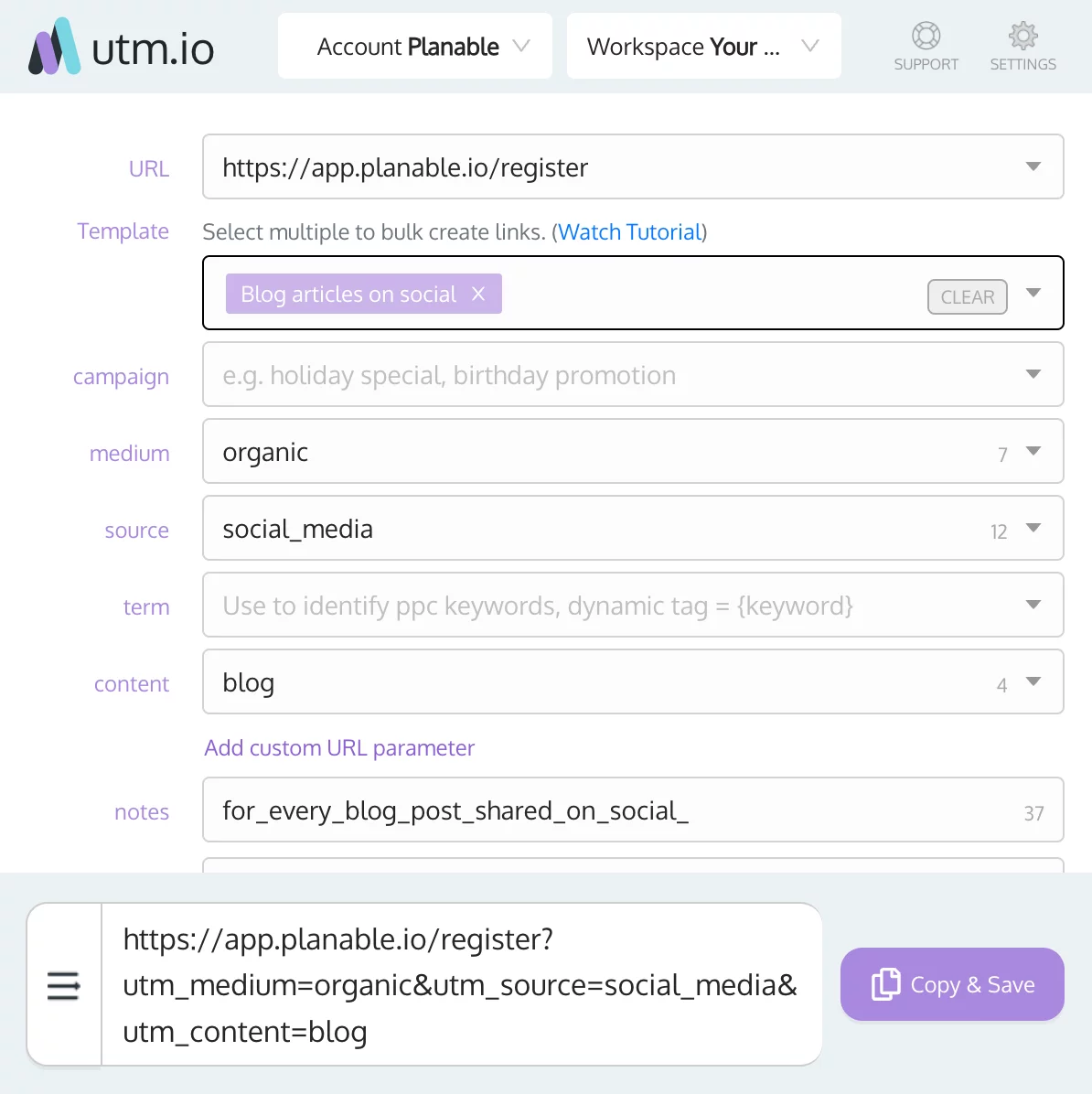
Campaign UTM management with UTM.io
It’s no news attribution is super important for successful marketing campaigns. For this, I use UTM.io as a simple UTM builder. I especially like the browser extension which makes it extremely easy to use for UTM building, while its more advanced features enable you to define dynamic variables, custom roles, or workspace rules — which makes it fit for bigger teams with more complex needs as well.
UTM.io offers free and paid plans, but exact costs are hidden behind sign-up links — so it’s best to explore based on your specific needs. It’s a great tool to measure your campaign performance, so definitely consider at least the free version.
Analytics
1. Planable Analytics – best for social media reports
Planable Analytics is, obviously, my favorite of the campaign management tools for social media managers. It offers great insight into your social media performance and does so in a clean, beautiful interface. In Planable, you can find social media analytics and reports for Instagram, Facebook, and LinkedIn. More platforms are soon to come.
Planable Analytics is available as an add-on for all Planable paid plans. It comes with a 7-day free trial, and it’s priced at $9/month per workspace. If you’re serious about running social media campaigns, and would rather avoid the headaches of crowded and confusing interfaces, then Planable Analytics is something you definitely need in your tool stack.
2. InnerTrends – best for product growth analytics
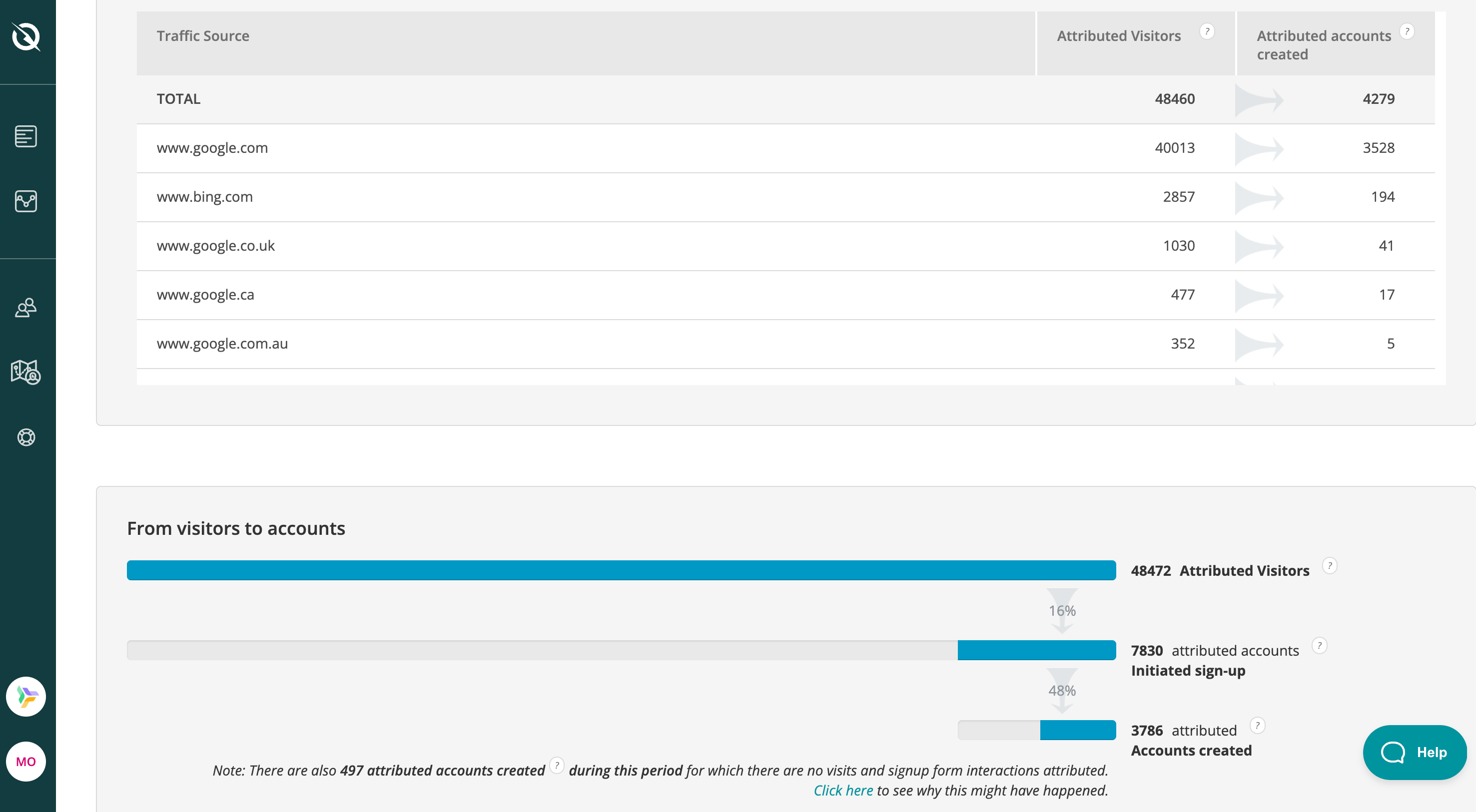
Marketing conversion analysis in InnerTrends
InnerTrends is one of the best analytics tools I found to follow up on channel performance metrics linked with conversion data inside our app funnels. It basically allows us to know which customers perform best in the app, and what marketing campaigns bring those customers in the first place. It’s a great automation tool that comes with pre-built reports for the customer journey, from acquisition, through retention and up to engagement.
InnerTrends offers a free version for core metrics, and its pricing starts at $69/month billed yearly. It’s one of the best campaign management software for product growth teams.
3. Hotjar – best for on-site analytics

Landing page analytics in Hotjar
Hotjar is where I learn how visitors behave on our marketing pages. We use it for on-page optimizations for our main website and specific campaign landing pages. The heatmaps are useful to know what content attracts visitors and where we need to concentrate our efforts, while the specific behavior recordings offer insight into any parts of the pages that are confusing and have the visitors hesitating. Advanced features also include on-site surveys and even user interviews.
Hotjar offers some basic capabilities for free, while pricing starts at €32 per month and is also based on your main goals — observe, ask, or engage with your visitors. Overall, Hotjar is a great marketing platform when you’re focusing on-page conversions.
AI tools
1. Planable AI
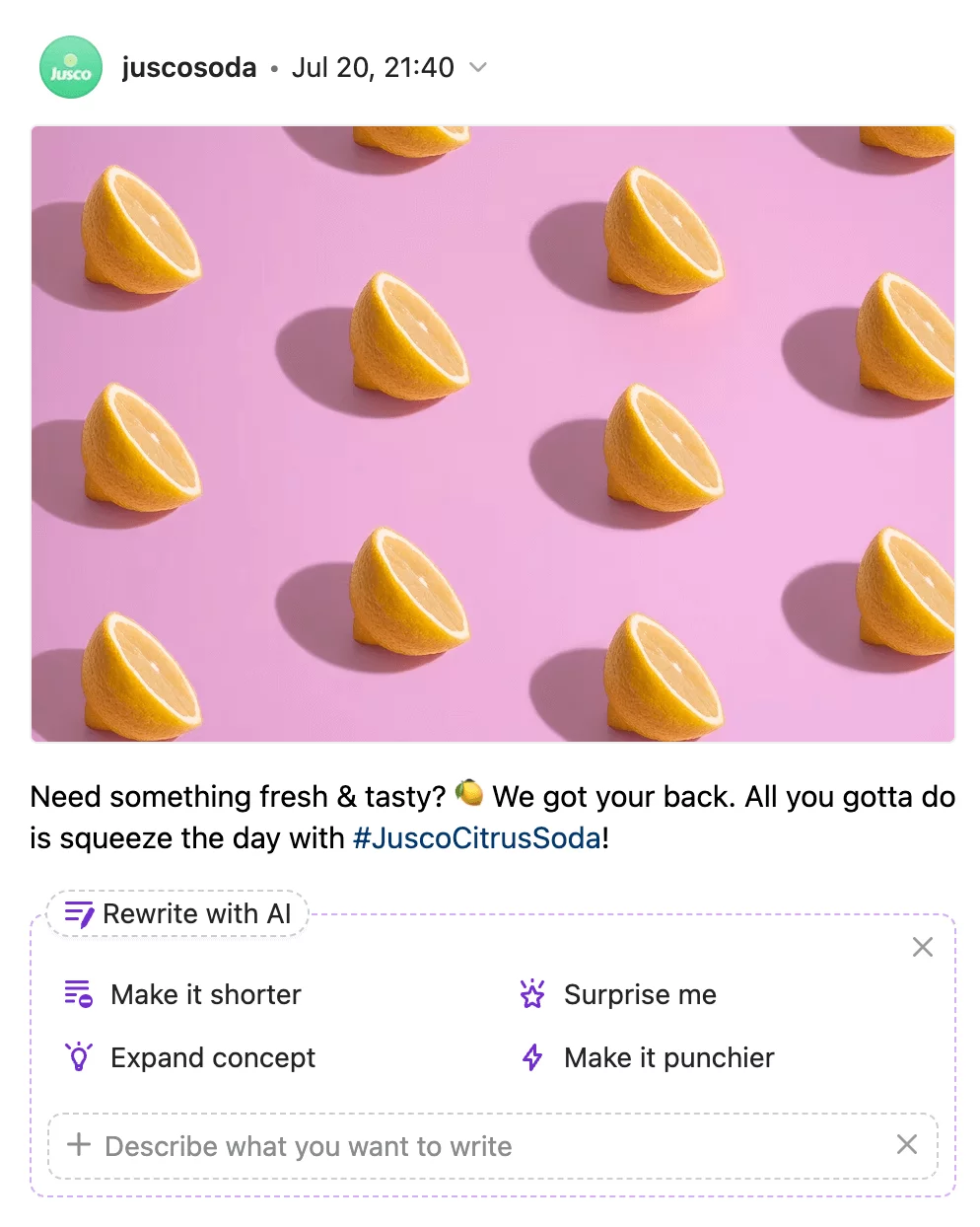
Integrated AI writing assistant in Planable
Planable AI is integrated into Planable’s post composer and comes super handy when you’re looking for a bit of inspiration. It can improve existing copy or generate captions from zero, based on your custom instructions. It can also help with social media hashtags, emoticons ideas, or translations.
With Planable you can create any type of content — be it social media posts, that can also be published automatically through the tools’ direct integrations with all major 8 social media platforms, or rich-text formats like blogposts, newsletters, articles, you name it.
Planable AI is included in all of Planable’s pricing packages, including the free plan which gives you the possibility to try all the tool’s features for 50 posts. Planable’s paid plans start at $11/month, paid annually.
2. Chat-GPT
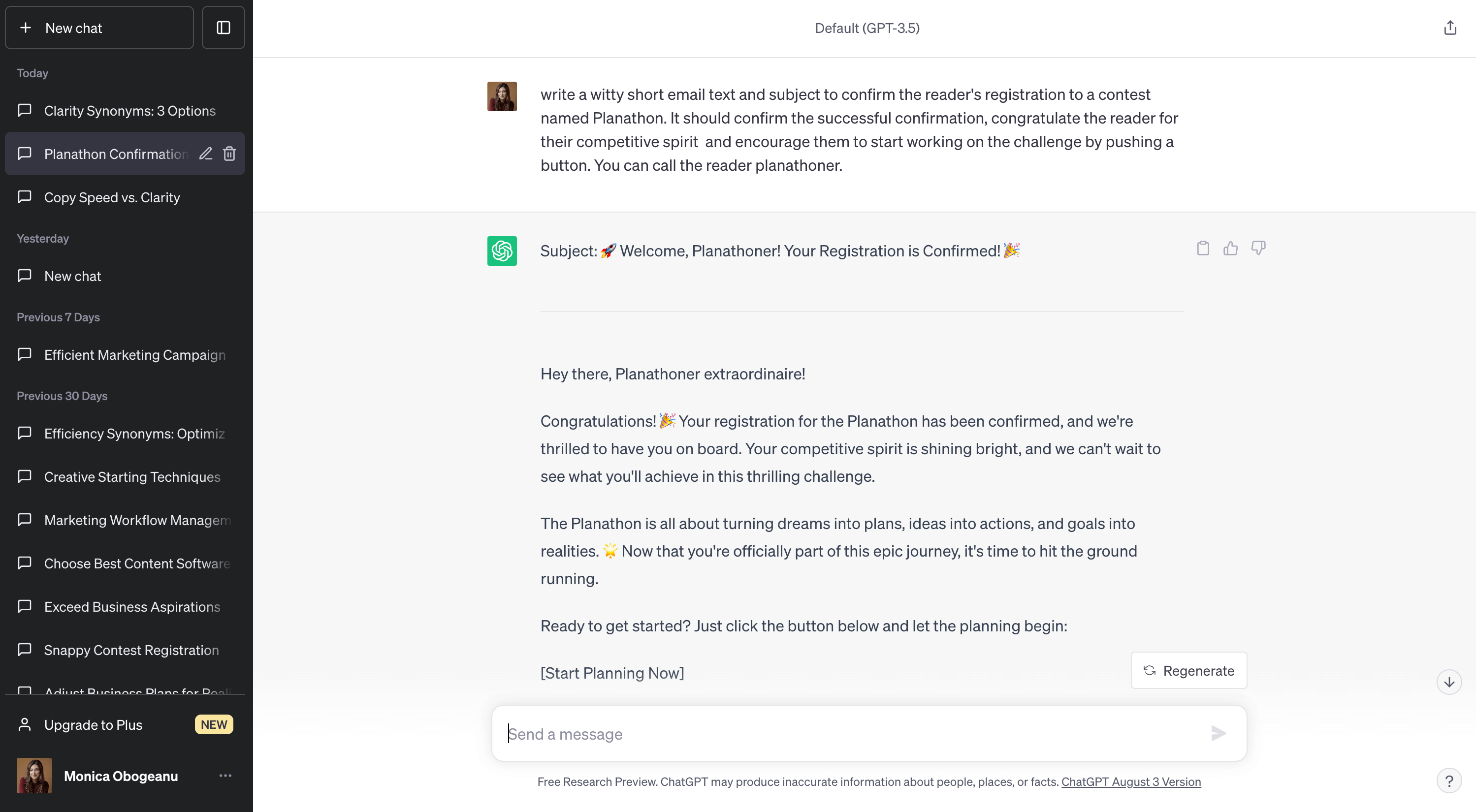
Email marketing campaign ideas with Chat-GPT
Chat-GPT is great for both easy and complex AI tasks. Our sales and marketing teams go to Chat-GPT both for content creation, as well as content summarization.
Chat-GPT comes with a great free version, but if you want to make sure you have priority access even during peak times, you can go with Chat-GPT Plus for $20 per month.

Miruna Dragomir, CMO @Planable, ex Social Media Comms Manager @Oracle & ex Marketing Coordinator @Uber. 9 years of experience in social media and marketing. Built Planable’s brand and reputation and helped grow it from 50 customers to over 6.5K. Social media fanatic, tech geek & a sucker for learning.



